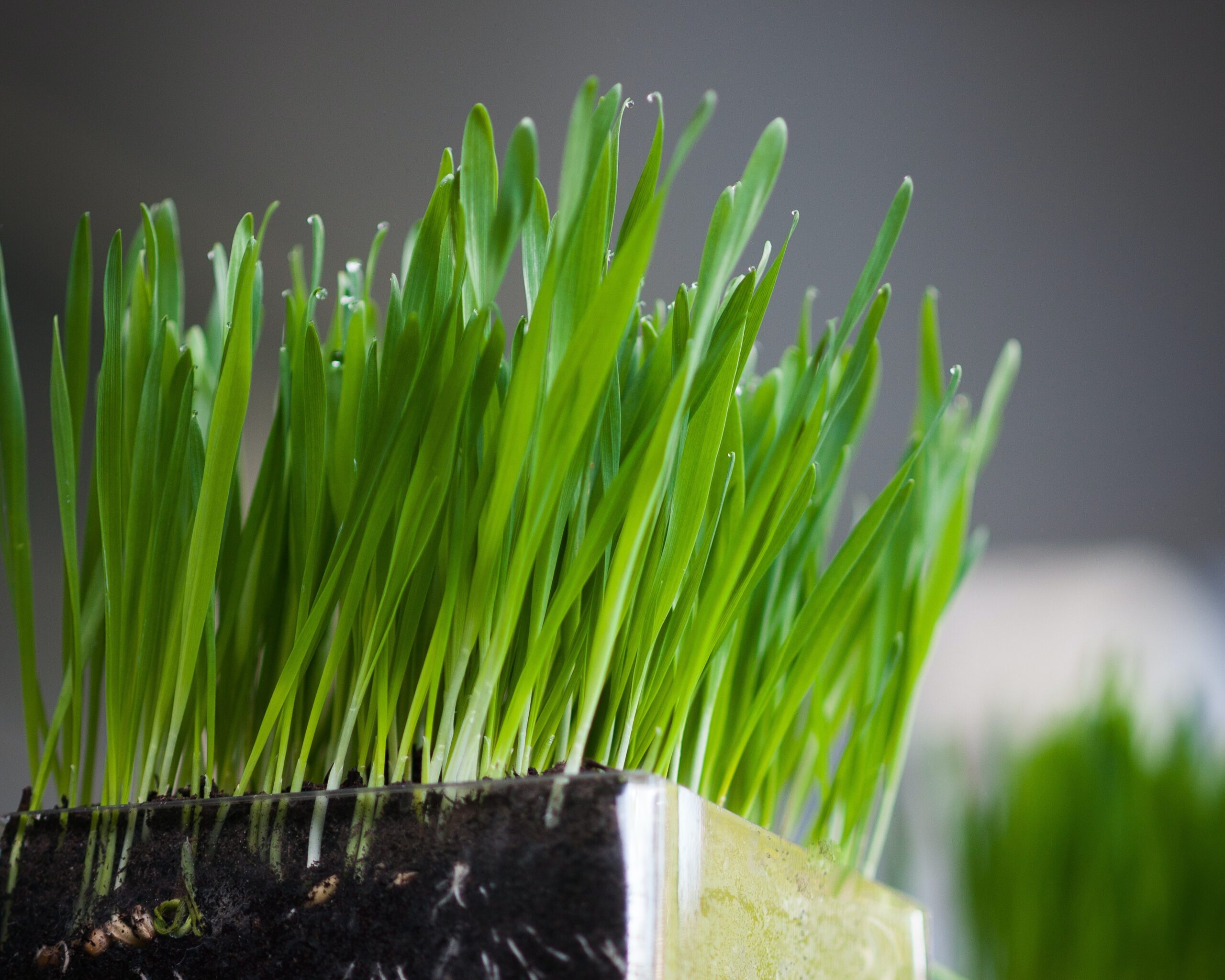
Wheatgrass is a potent superfood. A spectacular source of essential vitamins and minerals, it is linked to so many positive health benefits that we can’t even list them all here. So why leave it to the expensive smoothie shops? Wheatgrass is incredibly easy to grow and can provide a year-round boost of vital, living nutrition.
Wheat berries are seeds, so sprouting them really isn’t that complicated. Put them in some dirt and give them water and light and they’ll grow just like anything else, so don’t be fooled into thinking you need fancy equipment. Specialized gear might make you more efficient if you want to have a long-term supply, but there’s no reason you can’t improvise with things from your garage and still get quality wheatgrass. Here’s a simple guide to getting started at home.
Wheatgrass Supplies
- Natural wheat berries (hard red wheat is a good option, but any grain will work)
- Water
- Tray or planter, with something to cover it with (seed starting trays with clear lids work great, just remove the plastic inserts and use the bottom tray part.) Make sure excess water can drain out.
- Growing medium, like potting soil or coconut coir.
Soak your wheat berries in water for 6-10 hours to jumpstart the germination process. Prepare your growing tray or planter by filling with damp growing medium. Drain wheat berries and spread in a thin layer over the medium. Cover with a clear lid or plastic wrap to keep moisture in, and set in a dark place. Check once or twice a day to make sure it does not get too dry. After a few days the grains should be well sprouted and can be placed on a sunny windowsill. Remove covering once it begins to obstruct growth, just make sure to keep your little garden well-watered. The wheatgrass can be cut and used at anytime, but the ideal time is when it’s around 4-6 inched tall. The older it gets the more likely it is to be bitter. Just like lawn grass, wheatgrass can regrow after being cut, but usually the best nutritional value is found in the first cutting.
Wheatgrass is best used raw. The easiest way to use it is to add a small handful to a fruit smoothie or wellness tonic. It can also be juiced and taken as a supplement shot.
Barley and Rye grasses are also excellent choices with similar nutrition benefits. They can be grown in the same way.



